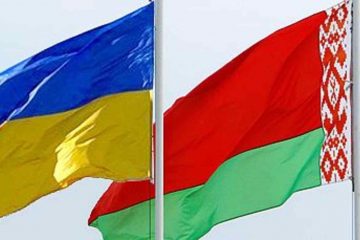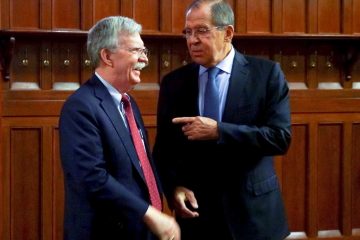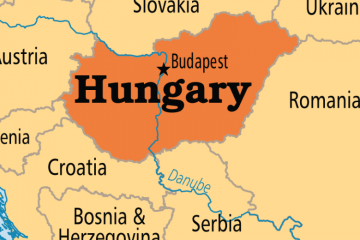Ukraine’s military will never be strong enough to beat Russia outright. But it doesn’t have to be.
he crowing began before the battle of Debaltseve had even concluded. During the cease-fire negotiations in Minsk, Vladimir Putin reportedly boasted that 500 Ukrainian soldiers would be killed and 2,000 taken prisoner. After the Ukrainians had withdrawn, he taunted them by saying that they had been defeated by “yesterday’s tractor drivers.” Perhaps inevitably, Western media reports picked up on the irresistible alliteration and began referring to the “Debaltseve debacle.”
In contrast, Ukrainian government officials claimed that the withdrawal had been planned and orderly. Some Ukrainian soldiers and analysts disagreed; others substantiated Kiev’s claims. One policymaker even suggested that Debaltseve was a win, calling it “a colossal signal of Russia’s impending failure.” The truth lay in between. Kiev had in fact planned and, to a large degree, effected an orderly withdrawal. The Ukrainians had fought hard and well, apparently inflicting high casualties on the Russians and their proxies. Reliable Ukrainian sources estimate that, in the month before the Ukrainian army withdrew, Ukraine had up to 260 dead or missing soldiers, while Russia lost 868, for a “kill ratio” of about 1 to 3. In short, for the Ukrainians, Debaltseve was anything but a rout.
But neither was it a victory. Indeed, the Debaltseve battle exposed serious weaknesses in the Ukrainian army, highlighting the need for immediate reform. Much attention has focused on the fact that weapons and supplies are insufficient and frequently obsolete. Arguably more serious is poor top-level leadership, inadequate inter- and intra-agency coordination, and a lack of strategic and tactical planning. Serhiy Pashynsky, head of the parliamentary committee on national security and defense, is unsparing in his criticism. The Ministry of Defense, the general staff, and the military-industrial sector — characterized by “an absolutely primitive bureaucracy, lack of responsibility, and non-professionalism” — do not communicate effectively with each other and are unable to coordinate their actions, he said.
The consequences of these shortcomings are clear. Debaltseve was the third time in half a year that large numbers of Ukrainian soldiers were encircled by Russian forces. The first was the disastrous battle of Ilovaisk, in August, where Kiev lost up to 1,000 men and much heavy equipment. The second was the four-month battle for Donetsk’s airport, where Ukraine’s so-called “cyborgs” held on to their bit of a terminal until their opponents blew up the remnants of the structure — and the Ukrainians with it — in January. In all three instances, the Ukrainian general staff was determined to hang on to territory even after it had become obvious that the positions were indefensible. The top-notch Ukrainian military analyst Yuri Butusov puts the blame squarely on the head of the general staff, Gen. Viktor Muzhenko, whom he accuses of gross incompetence and an inability to break with an outdated Soviet military doctrine that emphasizes heavy artillery, wars of position, and the impermissibility of tactical retreats.
Since Muzhenko is President Petro Poroshenko’s protégé, criticism of the former translates into criticism of the latter. Equally harsh critics of Poroshenko and the general staff are found among the commanders of Ukraine’s volunteer battalions, which frequently occupy front-line positions and bear the brunt of the fighting. Accusing the high command of ignorance of facts on the ground, these leaders have recently agreed to coordinate their activities, implying that they may do so independently of Kiev. The threat these battalions pose to the stability of the Ukrainian government has been grossly overstated, and their commanders are anything but warlords. But Kiev’s failure to integrate them fully into the formal armed forces means that their potential to act as loose cannons will always remain a danger, especially if the government adopts policies they reject.
Transforming Ukraine’s army into a modern fighting force will not be easy. Every Ukrainian government has neglected the military since 1991, when Ukraine inherited some 780,000 troops from the Soviet Union. The decay was especially rapid under Viktor Yanukovych’s rule from 2010 through 2013, as he assiduously diverted resources to the Internal Ministry, which offered his regime protection.
Since then, there have been substantial improvements. As Pashynsky suggests, there is no comparison between the army of today and the ragtag force that called itself an army when Russian President Putin seized Crimea without firing a shot a year ago. Ukraine plans to double the size of its army to 250,000 soldiers; the 2015 budget foresees a significant rise in military expenditures, to 5 percent of GDP. (Compare that with the less than 2 percent spent by most NATO members.) Thanks to a massive volunteer effort and some Western assistance, the army’s physical infrastructure, basic equipment, food provisions, and medical supplies have improved. Ukraine’s defense industry, which was the world’s fourth-largest arms exporter in 2012, has been manufacturing and repairing the requisite heavy (mostly Soviet-era) equipment and is slated to ramp up production in 2015. And Ukraine’s soldiers have demonstrated that they are capable of holding their own against a more modern Russian adversary.
But much more needs to be done for Ukraine to defend itself against further Russian aggression. As Butusov and other analysts argue, the general staff and the lower levels of the command structure must be revamped, replacing old Soviet-era cadres with officers who have experienced real battle in the last year. The Ministry of Defense and “Ukroboronprom,” the state agency responsible for military production, must be streamlined. An up-to-date grand strategy identifying Ukraine’s friends and enemies and laying out how Ukraine’s security can best be pursued under current conditions has to be developed. The implications of such a plan for tactics, force structure, and weapons procurement must also be spun out. Finally, the armed forces themselves, currently consisting of some 130,000 conscripts and 35,000 battle-ready troops, have to be restructured. A smaller, leaner, and meaner army consisting of mobile units with the ability to deliver targeted firepower is just what Ukraine needs to meet its only real strategic threat, that emanating from Russia. All these changes will take time and money.
Still, even if the general staff is fixed, competent commanders are appointed, coordination is improved, the army is reformed, and the requisite armaments are increased, Ukraine’s armed forces will be no match for Russia’s in a head-on collision — which, for what it’s worth, even Putin says would be an “apocalyptic scenario” that is “virtually impossible.” Although Russia’s armed forces, as military analyst Pavel Felgenhauer notes, could not win a war against a modern opponent such as the United States or NATO, they are, and will remain, much stronger than Ukraine’s, if only because of the size difference. But victory means different things for Ukraine and Russia.
The unspoken assumption of much Western commentary on the Russo-Ukrainian war is that Ukraine needs to have the capacity to “beat” Russia, but in fact Ukraine’s military doesn’t have to be stronger than Russia’s for Ukraine to win. It just has to be strong enough to keep Russia from winning — that is, from embarking on a massive land war or compelling Ukraine by means of a costly war of attrition to reintegrate the Donbass enclave. Neither of those options is easy for Russia. Attempted conquest of Ukraine would be a bloody, risky, and expensive proposition that would unleash partisan resistance, lead to a prolonged occupation, and could start World War III. In addition, though the Minsk II agreement envisions Ukraine’s paying for the Donbass enclave’s reconstruction, Kiev is highly unlikely ever to accept financial responsibility as long as the anti-Ukrainian separatists run the region and continue violating cease-fires.
The challenge before Ukraine is to acquire as quickly as possible the force structure and armaments it needs to sustain a potentially long war of attrition. Changing the force structure is intrinsically difficult and time-consuming; acquiring the appropriate weaponry is not, being primarily a function of money and political connections. Russia has a huge advantage over Ukraine in terms of aircraft and tanks: 1,571 combat aircraft and 392 helicopters to Ukraine’s 231 and 139, as well as 2,750 tanks, plus an additional 18,000 in storage, to Ukraine’s 1,150, plus 1,435 in storage. Given this disparity, it’s unsurprising that Kiev is prioritizing the acquisition of surface-to-air and anti-tank missiles, real-time intelligence, and advanced radar systems.
Russia’s conundrum is arguably greater than Ukraine’s, because Russia already has ownership of the disputed territories. Continuation of the status quo will only reinforce the eastern Ukrainian enclave’s status as an impoverished, unstable, and desperate Russian protectorate; increasingly free Kiev to pursue reform in the rest of the country; and tax the Russian economy, which has already gone into a tailspin as a result of Western sanctions and falling oil prices. Putin’s strategic miscalculations — starting a war without knowing how to finish it has to be the greatest of them — have maneuvered him and Russia into a dead end with no easy escape. The recent increase in terrorist bombings of civilian targets in Odessa and Kharkiv may be a last-ditch effort by Putin’s proxies to maintain the heat on Ukraine despite the emerging stalemate and frozen conflict.
Ukrainian policymakers have no illusions that Western weapons would change the balance of power in eastern Ukraine. But they expect that a stronger Ukrainian military would compel Putin to think twice about further escalations, especially a massive one. As Kiev sees it, Putin initiated the war by invading Crimea as punishment for the Maidan revolution (a view corroborated by a recently leaked, and apparently authentic, high-level Russian document). And he has escalated since then, despite the fact that the West never courted Ukraine (indeed, it had suffered from Ukraine fatigue since 2007) and has done nothing to undermine his control of Crimea and the eastern Donbass. His consistently aggressive behavior suggests that escalation is a function not of aggressive Western actions, but of equally consistent Western inaction.
Seen in this light, the stalemate in the Donbass is the result of Ukraine being strong enough to stop Putin. Accordingly, it was Ukraine’s strong-enough performance at Debaltseve — and not Western pleading — that brought Putin to the table at Minsk II. Continued stalemate — or even a lasting cease-fire — is therefore dependent on Ukraine’s remaining strong enough for the foreseeable future. Since Russia will escalate in the face of weakness, maintaining the stalemate means enhancing Ukraine’s military capabilities just enough to keep Russia at bay. Then, and only then, as Kiev sees it, would peace be possible.





Comments